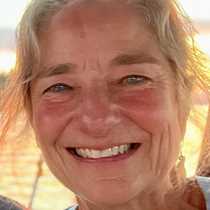Tromsø
For the past week we have been traveling amongst glaciers, floating ice, seabirds, tall rock cliffs, and walruses . . . in a vast, Arctic wilderness. We’ve seen few signs of humans since we embarked on this voyage, save for some old trapper huts, and whale bones left on shore from whaling long ago. This morning we re-entered civilization; the National Geographic Explorer arrived at Tromsø, along the coast of mainland Norway. Tromsø is a small city known as the ‘gateway to the Arctic,’ and many facilities here proclaim that they are “the most northerly ____.” Remnants of the Gulf Stream travel north along the coast, and keep temperatures here surprisingly mild considering the latitude of nearly 70 degrees N.
Some of us hiked among picturesque hills on the nearby island of Kvaløya. Over millennia, glaciers have smoothed the land, so there are many oblong, gradually sloping mountains. Some sharper, jagged peaks contrast with the smooth, curving valleys and rounded peaks. Due to the high latitude, few tall plants grow atop the hills, but their slopes are covered by ankle-high plants: an abundance of blueberries, as well as bright red, black, and orange berries. At lower elevations there are . . . trees! On Svalbard, willow ‘forests’ rarely top 2 inches in height, but here in Tromsø, birch trees grow taller than us. Rocks decorated in colorful lichens cover the slopes; Norwegian folklore explains that the rocks were trolls who turned to stone after being caught in sunlight. Many of us tasted wild cloudberries, which are a prized, wild berry of northern Scandinavia. Some hikers saw reindeer, and even a golden eagle.
We visited two museums in town: the Polar Museum, which focuses on polar exploration, and the Tromsø Museum, which has exhibits about the Sami people, who are native to northern Scandinavia.
Across the sound from the ship sits the white, triangular shape of the Arctic Cathedral, and atop the hill nearby is the local ski area, a 5-minute bus ride from downtown. Just a few blocks uphill from our ship there is a tall ski jump (conveniently located near the hospital.) Winters here are long and dark, but there is plenty of opportunity for skiing and northern lights.




